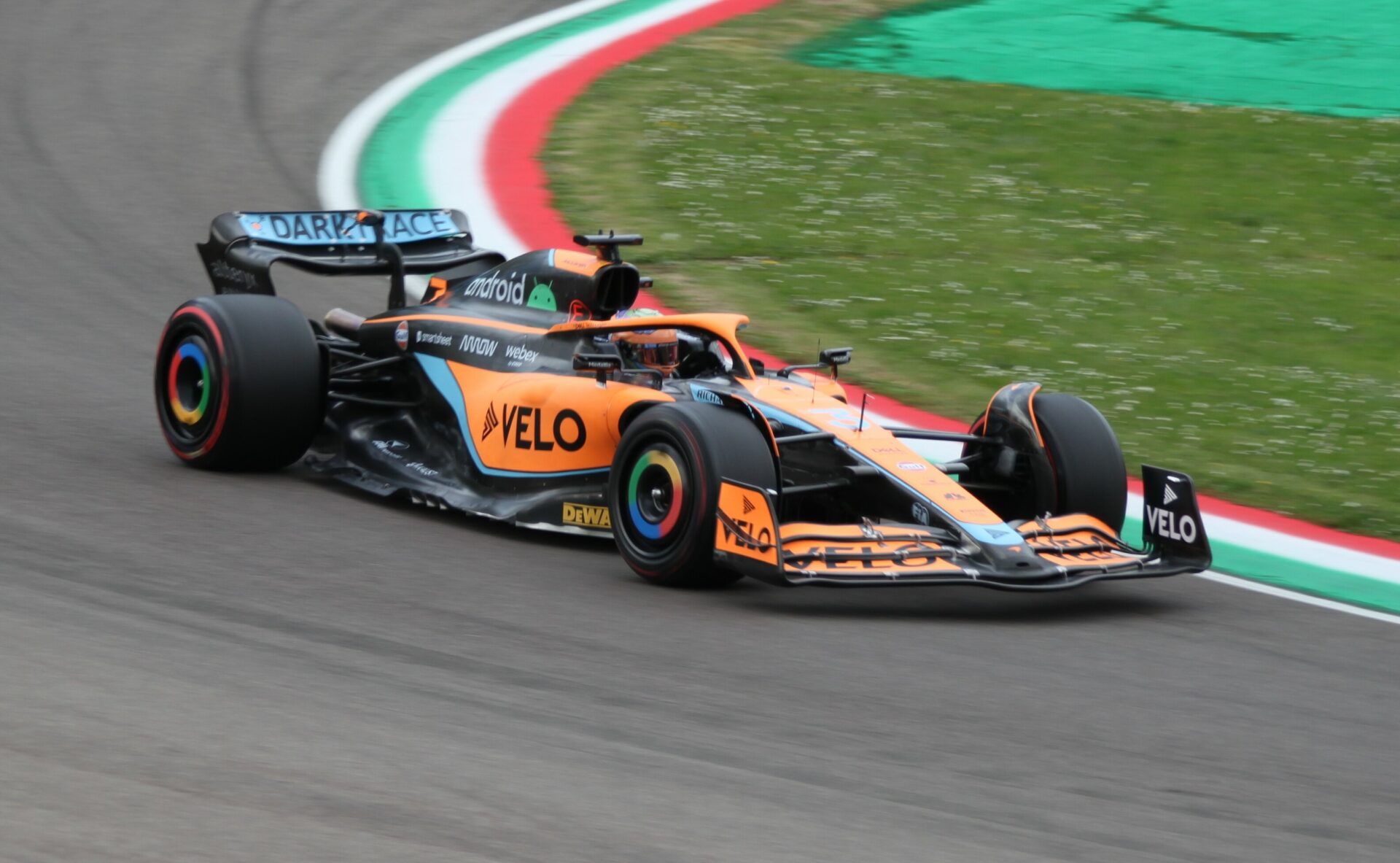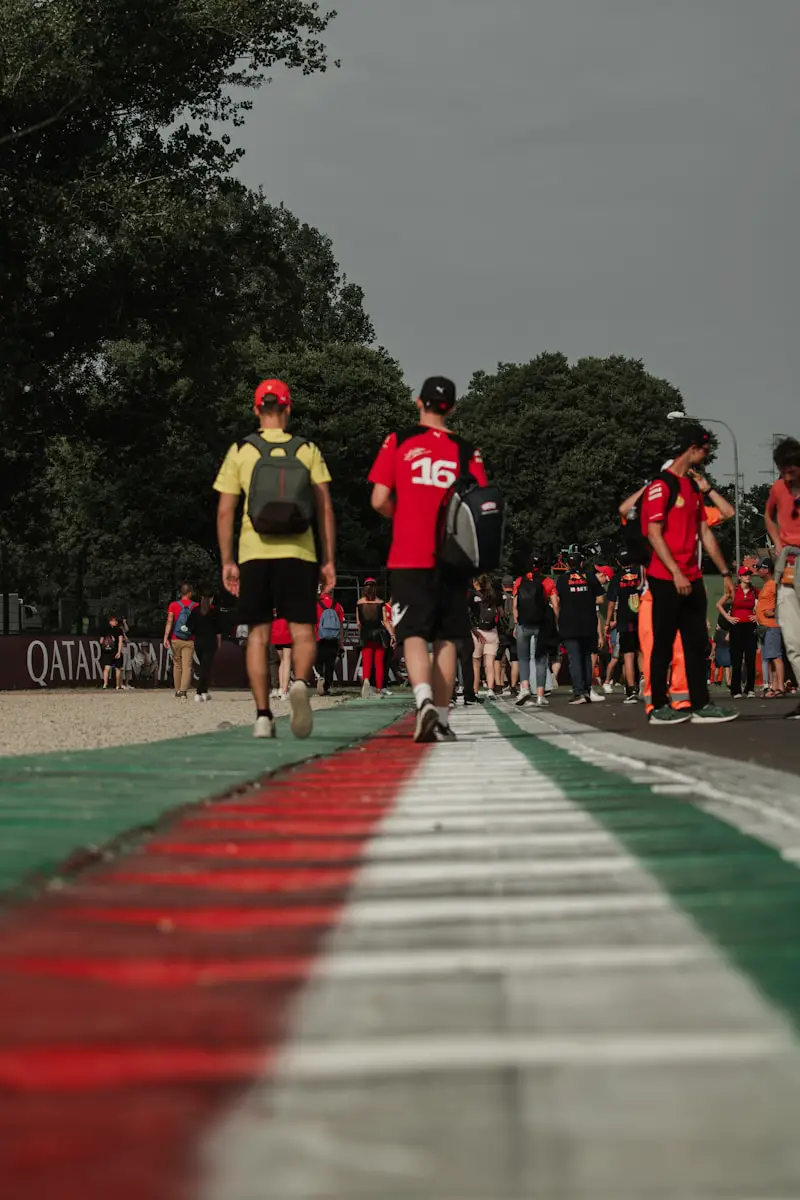
What makes Imola different?
Imola. Even the name feels fast. But what if, instead of just another race track, Imola was your golden ticket—equal parts thrill, tradition, and pure Italian soul? Whether you’ve only watched F1 on Sundays or you’re trying to out-strategize Toto Wolff from your sofa, this guide is built to teach you how deeply this sport feels. Here’s why drivers respect it, why fans revere it, and how you can fall in love with it.
TL;DR: Key Facts For Beginners
- Emotional & historic pedigree: Home to the tragic 1994 weekend that transformed F1 safety and forged eternal respect
- The layout is technical and challenging. 19 turns in under 5 km. You need to be precise—not just fast, but smart.
- Limited overtaking: One DRS zone (Turns 15–16) and narrow run offs mean qualifying and strategy matter most
- Strategic chessboard, not drag race: Two stop undercut often beats brute pace; positioning and pace are everything.
- Fan experience perks: It's close to the track stands, fan zones, Senna monument, and has a great atmosphere.
- Saying goodbye in 2025: Contract ends mid season, making the Emilia Romagna GP the last chance to experience Imola in F1.

Fast Facts for First-Timers
- Location: Imola, Italy 🇮🇹
- Official Name: Autodromo Internazionale Enzo e Dino Ferrari
- First F1 Race: 1980 (San Marino GP)
- Track Length: 4.909 km
- Lap Record: Lewis Hamilton, 1:15.484 (2020)
- Race Direction: Counterclockwise
- Grand Prix Name: Emilia-Romagna GP
- Final Race Year: 2025 — Imola leaves the F1 calendar after this one
The Legacy That Makes Imola Legendary
Designed by Checco Costa in the 1950s and hosting F1 since 1980, Imola’s (or better known as Autodromo Enzo e Dino Ferrari) gold star moment came in 1994 with the tragic losses of Roland Ratzenberger and Ayrton Senna.
That weekend rewrote F1’s safety playbook—and the world’s heart broke alongside. Formula races at Imola were the San Marino Grand Prix until 2008, but with its return in 2020, the event became the Emilia-Romagna Grand Prix.
Fast forward to May 18, 2025: Max Verstappen conquers Imola again, earning Red Bull’s 400th F1 race win in front of a record crowd of 242,000 fans—while Lewis Hamilton pulled a stunning comeback in Ferrari’s colours.
This 2025 race was Imola’s final F1 event, ending its contract tenure and closing a chapter on one of motorsport’s most emotional venues.

What Makes Imola Special (Even for New Fans)
Imola is a favorite for drivers who love rhythm and technical precision. For beginners, it’s where you really learn that some F1 circuits are built for poetry in motion. And its poetry consists of:
- Tight and Twist heavy Layout: 19 turns in under 5 km. No huge straights, no recovery space—just precision or punishment.
- Elevation Drama: Climb 30 m from Variante Alta to Turn 8. Drivers face shifting air density and visibility issues.
- Named Corners with Character: Tamburello–Villeneuve chain (Turns 2–6) demands flat out braking; Rivazza (Turns 17–18) is the uphill final flourish.
- Overtaking is a Rare Art: Only one DRS zone (Turns 15–16). Passing is surgical, not smash and grab.
- Anti Clockwise and Mean Mean Mean: Average speed ~236 km/h, but with high technical demand. No run-off highways, just grass or gravel—error = big.
- Rhythmic Flow: Drivers who value balance over brute force shine here.
For more details, you can read the Formula 1 Official on Imola.


Racing Strategy Insights at Imola
- Qualifying is Gold: Track is narrow and overtakes are bold moves. The starting position matters, especially from odd-numbered grid slots, where Tamburello entry is more manageable.
- Two‑Stop Sweet Spot: Tire wear meets stop time (≈29s off‑lap) to make two stops the strategic sweet spot.
- Classic Undercut Plays: Most drivers stretch the first stint, then jump early undercut to stay fast when the pack’s grip fades.
- Strategic chess, not checkers: Winning here hinges on tactics, timing, and pit‑lane timing as much as raw speed.
Want more on racing strategy at Imola? Read the F1 official article or check our guide on the strategies in Formula 1.
The Emotional Side of Autodromo Internazionale Enzo e Dino Ferrari
This place is soaked in history. Remember that final‑lap pass in 2025? Verstappen passed Piastri at Tamburello—then the crowd went silent, then erupted before erupting. And locals cheered the return of a legend—Lewis Hamilton—who showed passion in red too.
If You Ever Visit (And F1 Returns)
Stand with passion: Every stand hugs the track. You’re literally inches from thunder.
Best spots:
- Start/Partenza 2 – adrenaline HQ for race starts and grid spectacle
- Start/Partenza 3 – pit lane strategy expert's perch
- Acque Minerali – panoramic views of fast corner combos, ideal for epic photos
- Rivazza Hillside – Ferrari faithful, drama-filled corner spectacle
- Villeneuve & Tosa – twisting uphill braking zone with energy you can feel
- Variante Alta / Gresini – close-up chicane action + DRS battles
Each seat tells a story—from Tamburello’s roar to Rivazza’s climb.
‘Best seat’ at Imola? It’s wherever you handpick your racing memories, from the thunder of Tamburello to the raucous Rivazza hillside. Or read the official Imola F1 to find the best seat.

See Imola as another Italian track? Think again.
Imola’s not just a track—it’s a classroom of history, drama, engineering, and intense speed. Once you get it, you don’t just watch F1—you feel it.
By the time the lights go out, you’ll see not just cars, but courage, drama, strategy—and why Imola will always—and perhaps forever—feel sacred.
Want to hear more stories about circuits? Check out our guide to F1 tracks.

